Types of Geometric Shapes
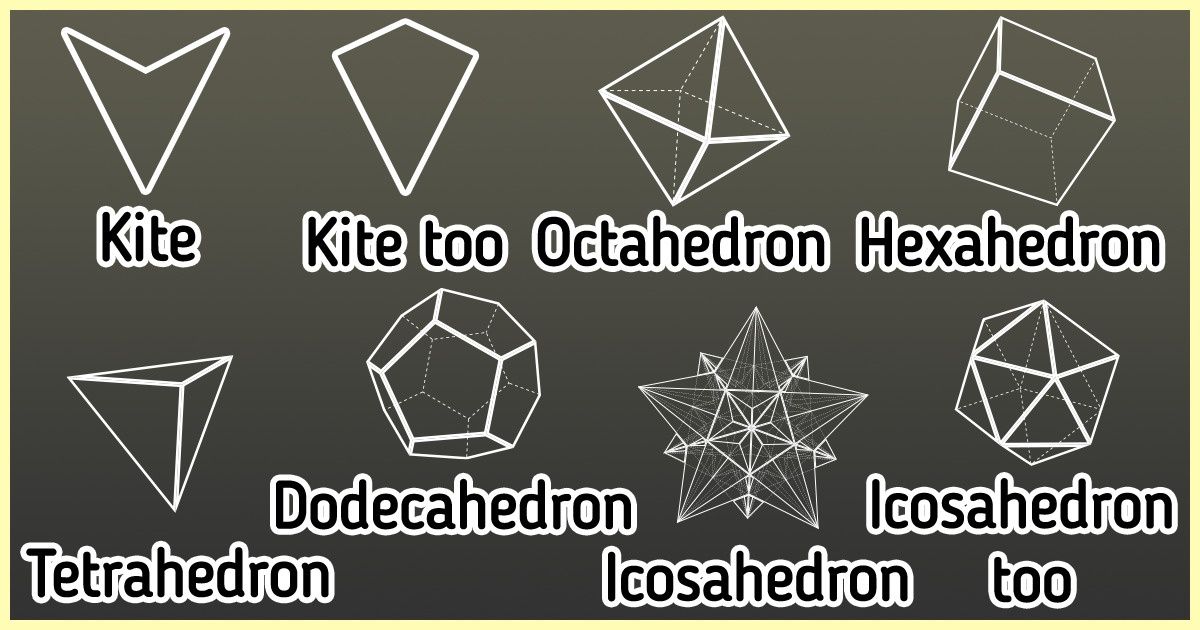
Many points make a line, and several lines connected to each other make various geometric shapes in a plane and in space. Thus, an arbitrary set of points form a geometric shape. It can be a square or a cube, a circle or a sphere, or a more complex shape, like an icosahedron, which can be represented by 2 different shapes.
5-Minute Crafts would like to tell you about the differences between geometric shapes.
2-D geometric shapes
The 2-D geometric shapes are flat plane figures that have 2 dimensions — length and width. 2-D shapes include the following:
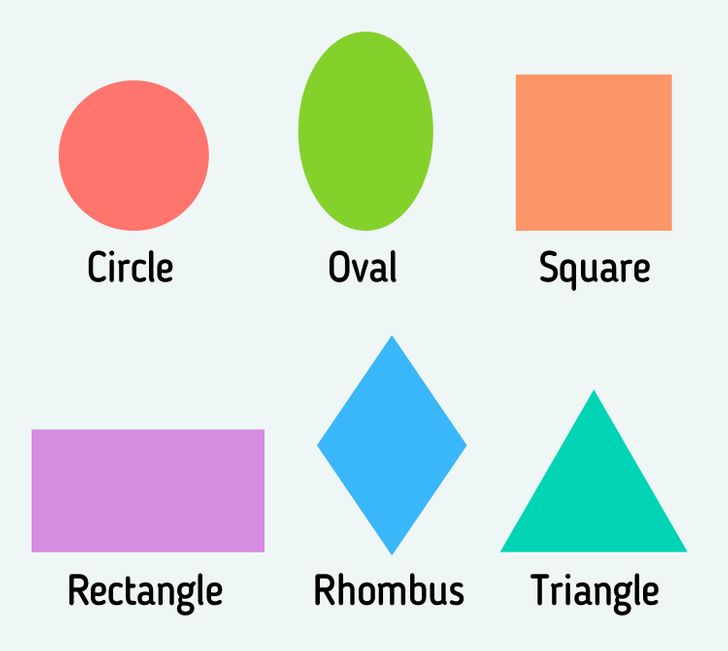
— A circle is a shape that has no corners, and all points along the circle are at an equal distance from the center.
— An oval is an egg-like shape. It also has no corners.
— A square is a shape with 4 equal sides and 4 right angles.
— A rectangle is a shape similar to a square: it has 4 sides and they intersect at right angles. Unlike a square, only the opposite sides of a rectangle are equal. If you use a line segment to connect a shape’s corner to the opposite one, you’ll get a diagonal. Both a square and a rectangle have equal diagonals.
— A rhombus is a shape with 4 equal sides, but they don’t intersect at right angles. The opposite corners of a rhombus are equal. A rhombus, like a square and a rectangle, is a quadrilateral.
— A triangle is a shape with 3 corners and 3 sides. The points at which the sides of a triangle intersect are called vertices.
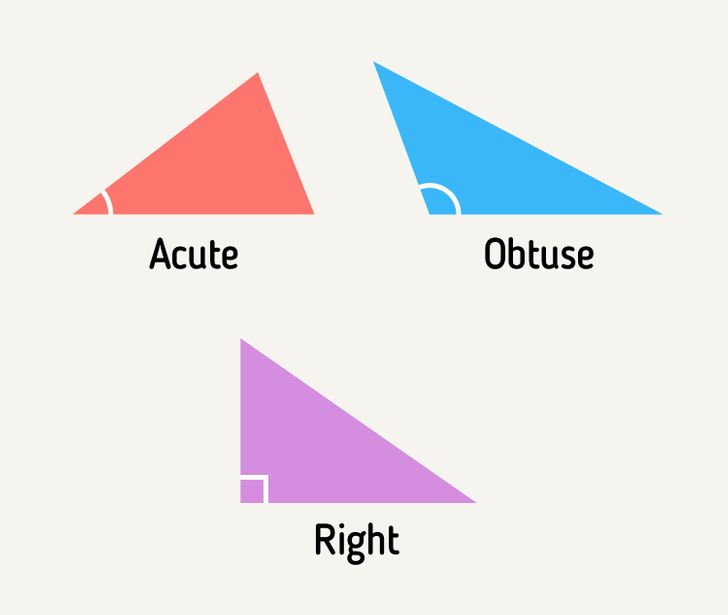
Triangle types are named according to their internal angles:
? an acute triangle — all its angles are acute (less than 90°)
? an obtuse triangle — one of its angles is obtuse (more than 90°)
? a right triangle — one of its angles is right (measuring 90°)
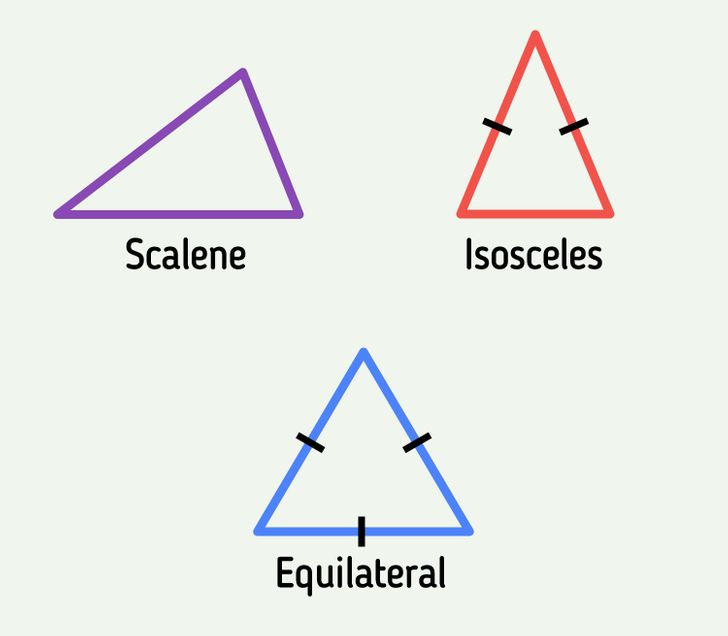
Triangle types are also named according to the length of their sides:
? An equilateral triangle has 3 equal sides.
? An isosceles triangle has 2 equal sides.
? A scalene triangle has 3 sides of different lengths.
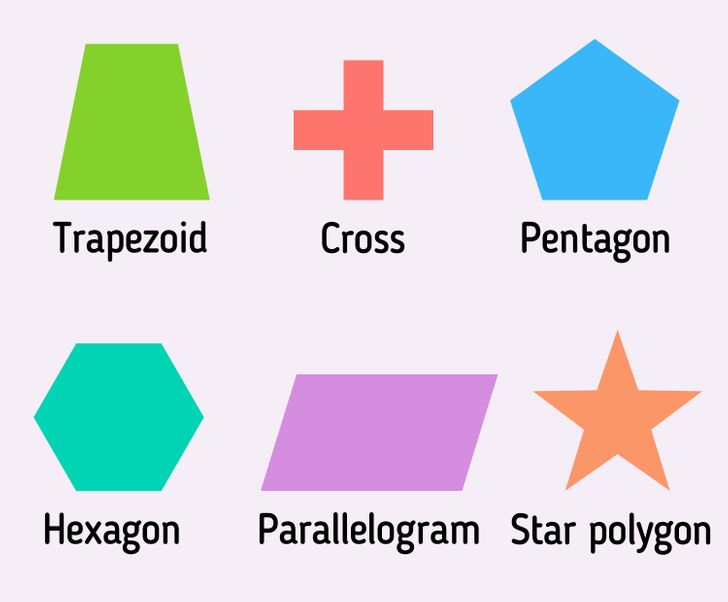
We described the basic flat geometric shapes above. But there are many other shapes, like:
— A trapezoid is a quadrangle with at least 2 parallel sides. Thus, a square, a rhombus, and a rectangle can be considered to be special types of trapezoids.
— A parallelogram is a quadrangle in which the opposite sides are parallel. So, a rectangle, a square and a rhombus are considered to be special types of parallelograms.
— A pentagon is a regular polygon with 5 sides. Usually, all sides and angles of a pentagon are equal. But, there are types of pentagons where the angles are not equal to one another.
— A hexagon is a regular polygon with 6 equal sides, while its corners form 6 equilateral triangles.
— A cross is a shape that consists of 2 intersecting lines or rectangles.
— A star is a flat, non-convex polygon shaped like a star. A star can be 3-pointed, 4-pointed, 5-pointed (as in the picture above), and so on.
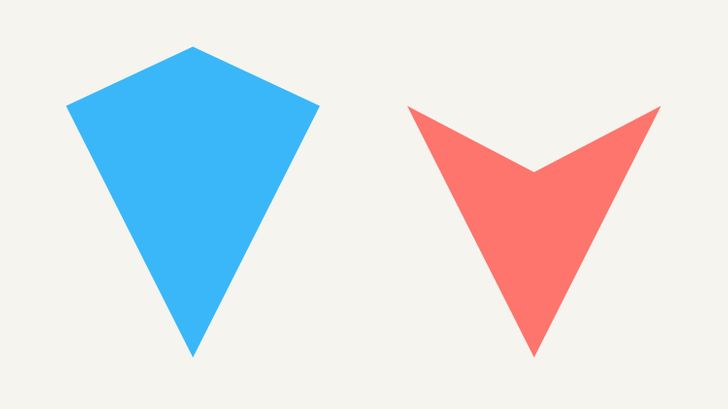
A geometric shape can be convex if all points of the segment connecting any of its 2 points belong to the shape. A circle, sphere, oval, and triangle are convex shapes. While quadrangles can be both convex and non-convex. For example, the picture above shows the same shape — a kite. It is a quadrangle, the sides of which can be grouped into 2 pairs of equal, adjacent sides. The kite on the left is convex, and the one on the right is non-convex.
3-D geometric shapes
A shape that has length, width, and height is called 3-dimensional. 3-D geometric shapes include the following:
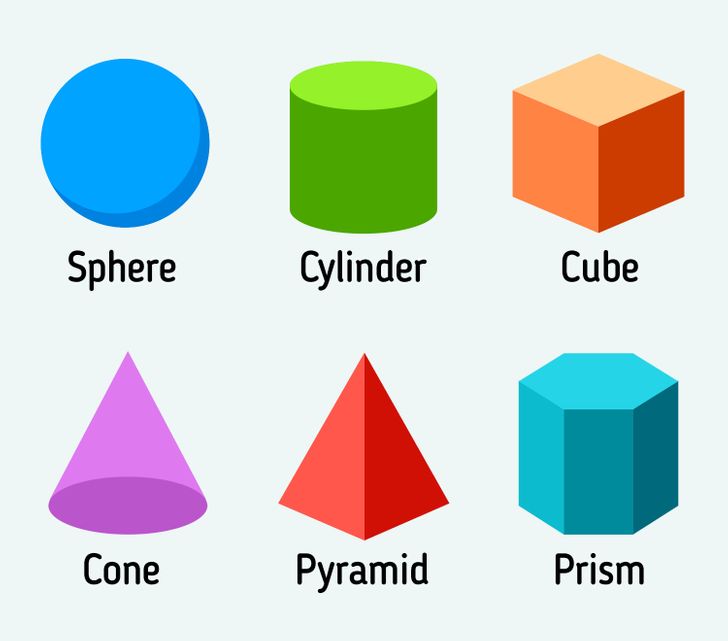
— A sphere can be called a 3-D circle. All points located on the surface of a sphere are at an equal distance from its center.
— A cone is formed by a set of lines that connect all points of the base with the apex. Cones can be different: for example, if the base of a cone is a circle, it can be a right circular cone.
— A cylinder is shaped like a roller. Its 2 bases are circles, and between them is a part of a cylindrical surface.
— A cube is a multifaceted shape, each face of which is a square. So, it has 6 faces, 12 edges, and 8 vertices. A cube can also be called a regular hexahedron.
— A pyramid is a polyhedron with a polygon at its base, and its faces are triangles that have a common vertex.
— A prism is a polyhedron, 2 faces of which are equal polygons located in parallel planes, and the remaining faces are parallelograms that have common sides with these polygons. In the picture above, you can see a particular example of a hexagonal prism. It has 8 faces, 18 edges, and 12 vertices.
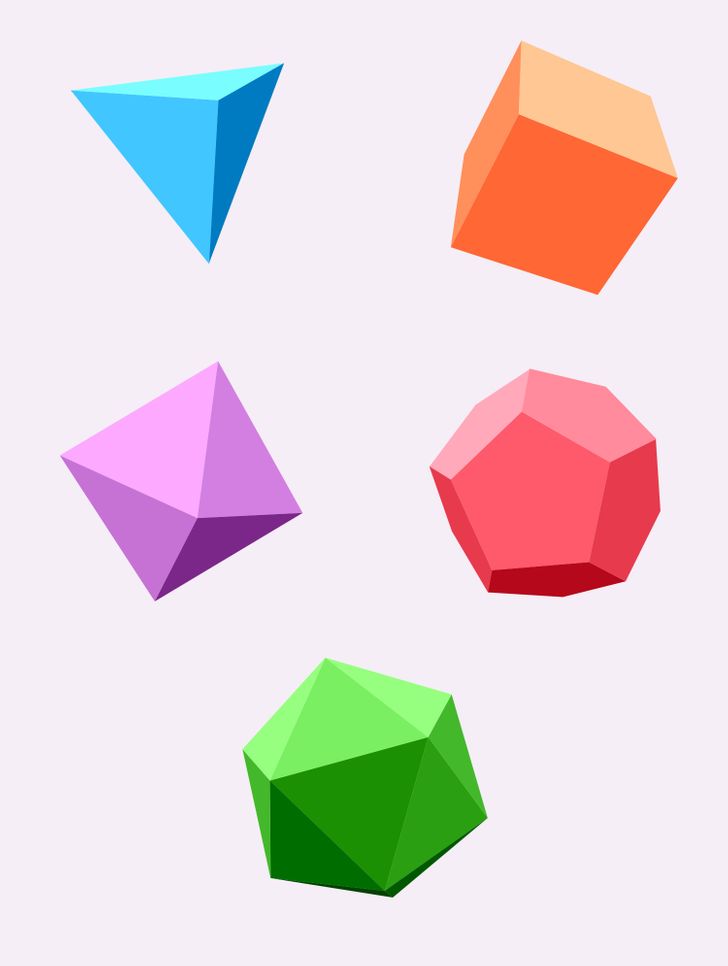
If a convex polyhedron consists of identical regular polygons and has spatial symmetry, it is called a regular polyhedron, or a Platonic solid. There are 5 solids in 3-dimensional space. The name of each of them comes from the Greek name for the number of its faces:
— A tetrahedron, or a triangular pyramid. This polyhedron has 4 triangles as its faces.
— A hexahedron, or cube.
— An octahedron is a polyhedron. Its faces are 8 equilateral triangles. If you cut the octahedron in half, you’ll get 2 identical pyramids.
— A dodecahedron is a polyhedron with 12 faces, and all of them are regular pentagons.
— An icosahedron is a polyhedron with 20 faces that are right triangles.
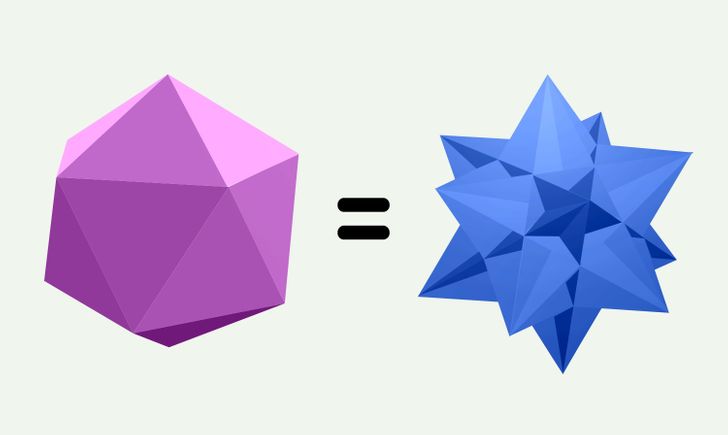
A regular icosahedron can be both convex and non-convex. But the term “regular icosahedron” often refers to a convex shape, and a non-convex shape is called a great icosahedron.